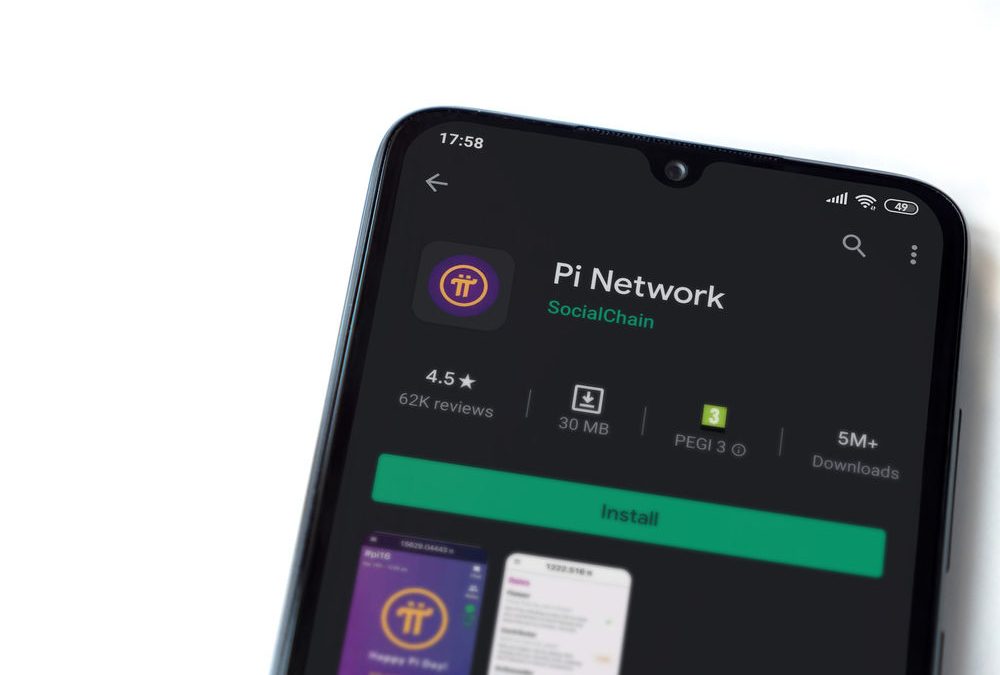Pi Network pioneers are patiently waiting for the platform’s airdrop, which is expected to happen later this year or in 2025. However, most of them have abandoned the project since it has been around for over five years, and the token listing may be delayed.
Pi Network aimed to solve a real problem
Pi Network is a crypto project that was launched in 2018 to solve some of the biggest challenges in Bitcoin’s network.
First, Bitcoin mining is quite expensive, making it only accessible to wealthy individuals and companies. Today, the industry is dominated by huge companies like Marathon Digital, Riot Platforms, and Core Scientific, which have thousands of machines.
Pi changed this by building an application that can be installed on Android and Apple phones. People can then mine these tokens by just clicking a button each day. As a result, Pi became highly popular with over 50 million users.
Second, Pi’s goal is to ensure that cryptocurrency is used widely in transactions and in commerce. As a result, they will ensure that transaction costs are substantially low. This is unlike Bitcoin, which is known for having big transaction costs.
Third, Bitcoin’s network is known for being slow, with transactions taking minutes before they are finalised. Pi Network’s transactions will be instant, making it a better cryptocurrency to use in commerce.
Pi Network aims to be more available to users since its app can be readily downloaded even in the cheapest mobile devices. For example, a local shopkeeper in rural Africa, Asia, or Latin America can start accepting the coin. Users will pay to their wallet, and then they can change them to fiat currencies later on.
In theory, this would solve a real problem, especially in countries like Nigeria, Turkey, and Zimbabwe, where the local currencies have imploded.
However, most of these businesses now have access to stablecoins like Tether and USD Coin (USDC), which are backed 1:1 to the US dollar.
Additionally, Pi Network’s developers have worked to ensure that there is a ready ecosystem of applications that accept the coin. Some of the current parts of the ecosystem are its browser and the Fireside Forum.
Pi and its users have faced major challenges
The reality, however, is that the Pi Network has not lived to the anticipated hype, which explains why activity has slowed.
A key reason for this is that a gap has existed between miners, often known as pioneers, and its developers. On official statements, Pi’s developers have noted that the goal is to have a popular cryptocurrency with a utility.
However, most pioneers have never been interested in the ecosystem. Instead, their goal has been to mine the tokens and then convert them to fiat currencies.
This explains why many of these users have now moved to other clicker games like Hamster Kombat, Tapswap, and Notcoin. Hamster has accumulated over 300 million users while Tapswap has more than 70 million users.
Launched just a few months ago, Hamster Kombat will launch its airdrop on Thursday, making it possible for players to convert their tokens into fiat currencies. Tapswap, on the other hand, is expected to launch the airdrop later this year.
Pi Network has identified three key things that need to happen before the mainnet launches. First, they want to ensure that the market conditions are good. In other words, their goal is to launch the token when cryptocurrencies are doing well.
Second, they hope to have completed KYC verification of most pioneers, to get rid of bots. In a recent statement, Pi Network extended the first deadline for the Grace Period in which pioneers must submit their KYC application to November 30th. After this grace period ends, pioneers who will not have done their KYC will forfeit their tokens.
The first deadline of the Grace Period for submitting KYC applications has been extended to November 30, 2024. This extension gives Pioneers more time to complete KYC, while the final deadline of Grace Period to complete Mainnet migration remains unchanged on December 31, 2024.…
8.0K
Reply
Copy link
Third, the developers will only move from the enclosed mainnet when there are enough applications in the ecosystem. This goal is to ensure that the token has a use case when it is available in exchanges.
Read more: 4 reasons why Pi Network mainnet launch may not happen soon
Is Pi Network a scam?
A popular question is whether Pi Network is a scam. So far, all evidence is that it is not a scam because users are never asked to pay any money to mine the token.
However, the most likely scenario is where the developers have used the enclosed mainnet period to make money since users see ads whenever they click the mining button.
As such, the mainnet launch will only happen when this advertising revenue dwindles completely. After that, the developers will make money through ads and by selling their allocated coins.
Read more: Pi Network: Pi coin listing faces a mountain of risks ahead
The post Is Pi Network a genuine crypto project or a scam? appeared first on Invezz

